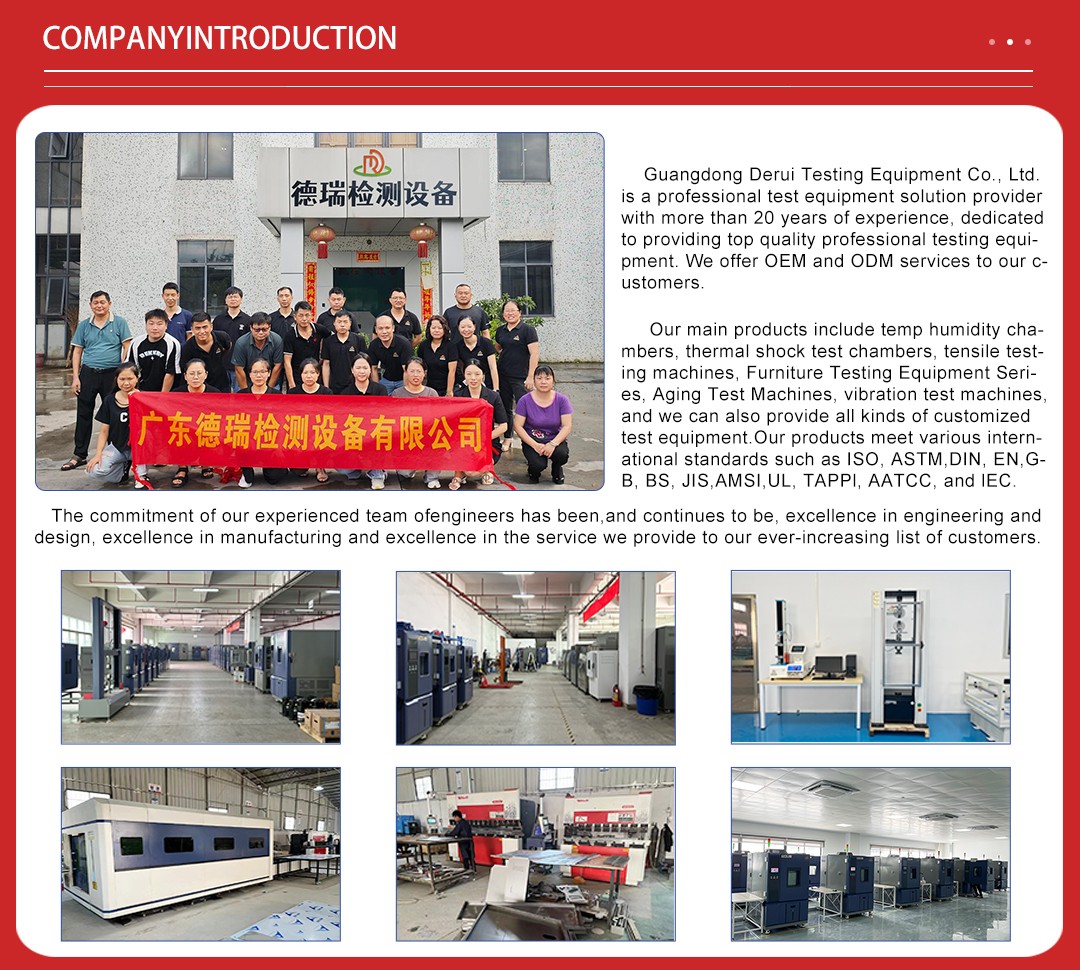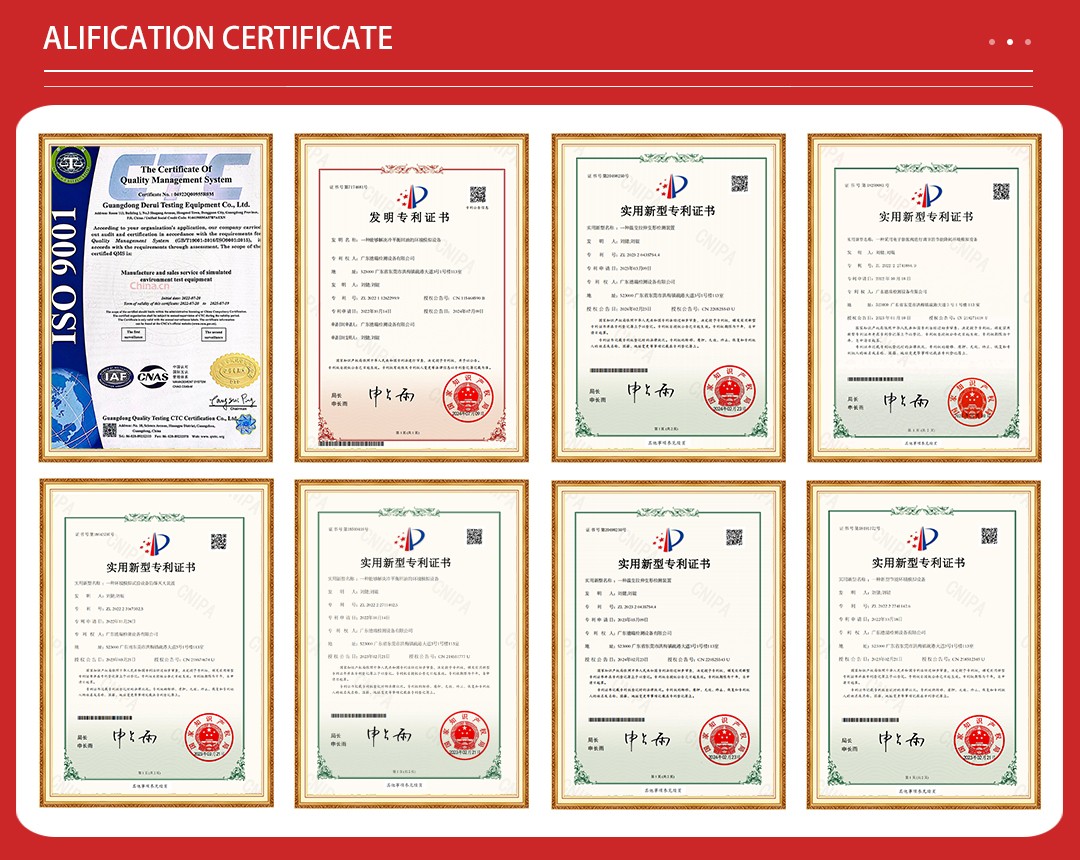
Temperature and Humidity Chamber for Product Aging Tests is a specialized piece of equipment used to simulate and accelerate the natural aging process of products, materials, and components. By subjec ...

Temperature and Humidity Chamber for Product Aging Tests is a specialized piece of equipment used to simulate and accelerate the natural aging process of products, materials, and components. By subjecting items to controlled environmental conditions, such as fluctuating temperature and humidity, these chambers help manufacturers assess the long-term durability, reliability, and performance of their products under extreme or fluctuating environmental conditions. This testing method is crucial in various industries, including electronics, automotive, pharmaceuticals, and consumer goods.

1. Simulating Aging Conditions:
The primary purpose of these chambers is to simulate the effects of aging on a product over time. By replicating environmental stressors like high/low temperatures and varying humidity levels, the chamber accelerates the natural degradation process. This allows manufacturers to observe how materials and products behave under real-world conditions, helping to predict their lifespan and performance in the field.
These chambers offer precise temperature regulation, typically ranging from -70°C to 180°C (or higher, depending on the model). The controlled temperature environment enables stress testing for extreme hot and cold conditions, which can reveal issues like material expansion, cracking, or degradation that may not be evident under normal circumstances.
Humidity control is another critical aspect of aging tests. The chamber can maintain a humidity range from 10% to 98% relative humidity (RH), simulating wet or dry environments. High humidity may cause corrosion, rust, or mold growth, while low humidity can lead to material brittleness or cracking. These tests help evaluate a product's resistance to moisture-induced damage.
One of the key benefits of using a temperature and humidity chamber is its ability to speed up the aging process. By exposing products to intense environmental conditions over a short period, manufacturers can gather valuable data on how their products might perform after years of use. This process, known as accelerated life testing, saves both time and money compared to waiting for natural degradation to occur.
The chamber simulates a wide range of conditions that products may encounter in their lifetime. This includes thermal shock (rapid changes between hot and cold temperatures), cyclic humidity exposure, and prolonged environmental exposure. These tests help identify weaknesses in product design, materials, or manufacturing processes, enabling improvements before mass production.
Modern aging test chambers come equipped with sophisticated monitoring systems that allow real-time tracking of temperature, humidity, and other environmental variables. Data logging features enable users to store and analyze test data, ensuring that results are precise, repeatable, and easily accessible for future reference or compliance reporting.
Temperature and humidity chambers are versatile and can be used for testing a variety of products, including electronics, automotive parts, pharmaceuticals, cosmetics, and packaging materials. They are particularly important for testing electronic components, circuit boards, and consumer products that are exposed to different environmental conditions during their lifecycle.
With advancements in technology, modern aging test chambers are designed to be more energy-efficient, minimizing the power consumption required to maintain stable testing environments. Additionally, many of these chambers are built with eco-friendly refrigerants and other sustainable materials to reduce their environmental footprint.
These chambers are often designed to meet various international standards, such as ISO, IEC, MIL-STD, and ASTM. Meeting these standards ensures that the tests conducted in the chamber are accurate, reliable, and recognized globally. Manufacturers can be confident that the test results adhere to internationally accepted benchmarks for product quality and reliability.
The ultimate goal of using a temperature and humidity chamber for aging tests is to predict how a product will perform in the long run. Whether it's an electronic device, automotive part, or pharmaceutical packaging, manufacturers rely on the data from these tests to make design improvements, ensure product safety, and meet quality expectations.

| Model | DR-H201 |
| Temperature range | -70~+150℃ |
| Temperature fluctuation | ±0.5℃ |
| Temperature uniformity | 2℃ |
| Humidity range | 20~98%RH (Refer Image below) |
| Humidity fluctuation | ±2.5%RH |
| Humidity uniformity | 3%RH |
| Cooling speed | 1℃/min in average (without loading) |
| Heating speed | 3℃/min in average (without loading) |
| Internal chamber material | SUS#304 stainless steel, mirror finished |
| External chamber material | Stainless steel |
| Cooling method | Air cooling |
| Controller | LCD touch screen, programmable control temperature and humidity Can set different parameter for cyclic test |
| Insulation material | 50mm high density rigid Polyurethane foam |
| Heater | Explosion-proof type SUS#304 stainless steel fins radiator pipe heater |
| Compressor | France Tecumseh compressor |
| Lighting | Heat resistance |
| Temperature sensor | PT-100 dry and wet bulb sensor |
| Observation window | Tempered glass |
| Testing hole | Diameter 50mm, for cable routing |
| Sample tray | SUS#304 stainless steel, 2pcs |
| protection device | Protection for leakage Over-temperature Compressor overvoltage and overload Heater short circuit Water shortage |
The Temperature and Humidity Chamber for Product Aging Tests is an indispensable tool for manufacturers seeking to optimize product design, improve durability, and ensure reliability over time. By accelerating the aging process and subjecting products to controlled environmental stresses, these chambers provide valuable insights into a product’s behavior under real-world conditions, helping to identify potential issues before they arise. With their ability to simulate diverse environmental conditions, these chambers play a critical role in improving product quality, reducing failures, and ensuring that products meet the rigorous demands of the market.


Not search wanted products